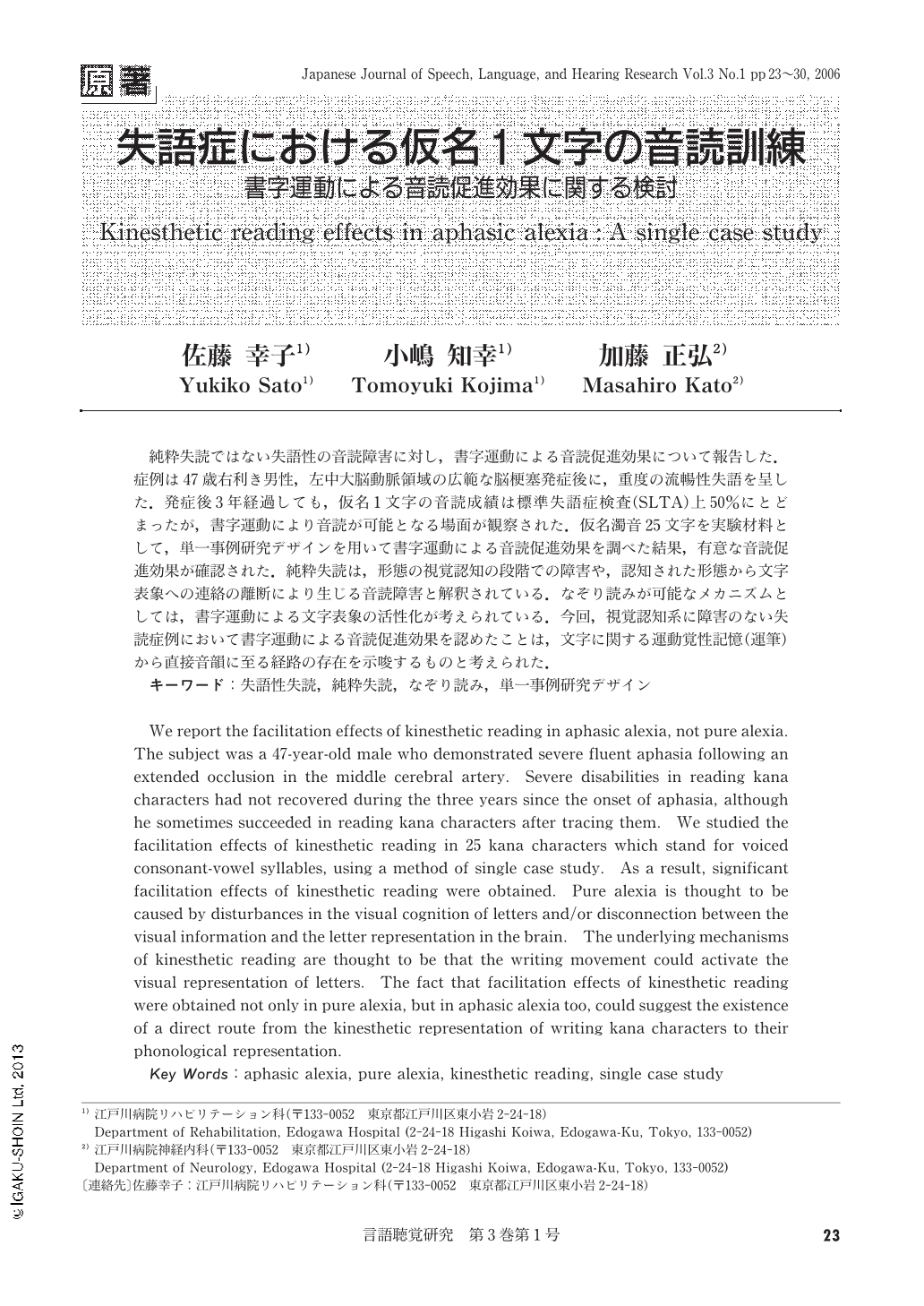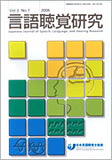Japanese
English
- 有料閲覧
- Abstract 文献概要
- 1ページ目 Look Inside
- 参考文献 Reference
- サイト内被引用 Cited by
純粋失読ではない失語性の音読障害に対し,書字運動による音読促進効果について報告した.症例は47歳右利き男性,左中大脳動脈領域の広範な脳梗塞発症後に,重度の流暢性失語を呈した.発症後3年経過しても,仮名1文字の音読成績は標準失語症検査(SLTA)上50%にとどまったが,書字運動により音読が可能となる場面が観察された.仮名濁音25文字を実験材料として,単一事例研究デザインを用いて書字運動による音読促進効果を調べた結果,有意な音読促進効果が確認された.純粋失読は,形態の視覚認知の段階での障害や,認知された形態から文字表象への連絡の離断により生じる音読障害と解釈されている.なぞり読みが可能なメカニズムとしては,書字運動による文字表象の活性化が考えられている.今回,視覚認知系に障害のない失読症例において書字運動による音読促進効果を認めたことは,文字に関する運動覚性記憶(運筆)から直接音韻に至る経路の存在を示唆するものと考えられた.
We report the facilitation effects of kinesthetic reading in aphasic alexia, not pure alexia. The subject was a 47-year-old male who demonstrated severe fluent aphasia following an extended occlusion in the middle cerebral artery. Severe disabilities in reading kana characters had not recovered during the three years since the onset of aphasia, although he sometimes succeeded in reading kana characters after tracing them. We studied the facilitation effects of kinesthetic reading in 25 kana characters which stand for voiced consonant-vowel syllables, using a method of single case study. As a result, significant facilitation effects of kinesthetic reading were obtained. Pure alexia is thought to be caused by disturbances in the visual cognition of letters and/or disconnection between the visual information and the letter representation in the brain. The underlying mechanisms of kinesthetic reading are thought to be that the writing movement could activate the visual representation of letters. The fact that facilitation effects of kinesthetic reading were obtained not only in pure alexia, but in aphasic alexia too, could suggest the existence of a direct route from the kinesthetic representation of writing kana characters to their phonological representation.

Copyright © 2006, Japanese Association of Speech-Language-Hearing Therapists. All rights reserved.


